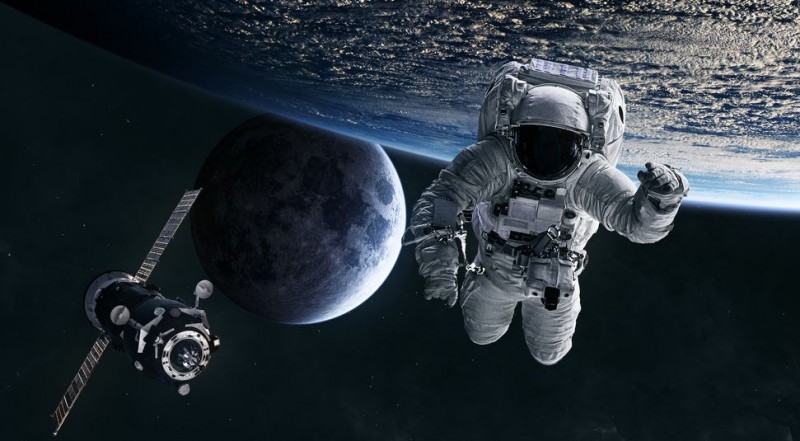
Introduction
In the vast expanse of space, the human body undergoes remarkable changes due to the absence of gravity. One intriguing phenomenon is the increase in height experienced by astronauts during their space missions. Contrary to what one might expect, the lack of gravity actually allows the spine to decompress, resulting in temporary height gain. This article explores the fascinating relationship between space travel, gravity, and spinal elongation, shedding light on the unique physiological adaptations experienced by astronauts.
The Effects of Gravity on Human Spines
To understand the impact of space on astronauts' height, it is essential to comprehend the effects of gravity on the human spine. On Earth, gravity exerts a constant downward force, compressing the spinal column. Over time, this compression can lead to a slight reduction in height. The intervertebral discs, located between the vertebrae, act as cushions and absorb shocks, allowing for flexibility and movement. However, the continuous gravitational force compresses these discs, causing them to gradually lose fluid and thickness, contributing to the overall height decrease experienced by individuals on Earth.
How Gravity Affects Height
When humans venture into space, they escape the clutches of Earth's gravity, experiencing a weightless environment. Without the constant downward pressure, the spinal column is relieved from the compression it endures on our home planet. As a result, the intervertebral discs have the opportunity to expand and regain their fluid content, allowing the spine to lengthen temporarily. This phenomenon leads to astronauts growing taller during their space missions.
The Role of Intervertebral Discs
Intervertebral discs play a crucial role in the height variation experienced by astronauts in space. These discs act as shock absorbers and facilitate movement between the vertebrae. In microgravity, where the gravitational force is significantly reduced, the intervertebral discs are no longer compressed. They absorb fluid, increasing their height and allowing the spine to elongate. This expansion of the intervertebral discs contributes to the overall height gain observed in astronauts.
Spinal Changes in Microgravity
The transition to a microgravity environment triggers various changes in the human body. One of the most noticeable alterations occurs in the spine. In the absence of gravity's constant downward pull, the spinal vertebrae separate slightly, leading to an increase in intervertebral space. This separation allows the spinal discs to expand, resulting in spinal elongation and subsequent height gain.
Measuring Height Changes in Space
Scientists and researchers employ specialized equipment to measure the height changes experienced by astronauts in space. Ultrasonic devices are utilized to calculate the distance between the vertebrae accurately. These measurements help monitor the expansion of the intervertebral discs and track the astronauts' height variations during their time in space. Precise data on height changes are crucial for understanding the effects of microgravity on the human body.
The Impact on Astronauts' Health
While the temporary height gain may seem intriguing, it is essential to recognize the potential health implications for astronauts. The decompression of the spine can cause muscle imbalances and postural changes, leading to discomfort and back pain. Astronauts may also experience reduced bone density due to the lack of gravitational stress on their skeletons. These health concerns highlight the importance of implementing countermeasures to mitigate the negative effects of extended space travel.
Countermeasures for Spinal Changes
To combat the detrimental effects of prolonged space missions on astronauts' spines, countermeasures are employed. Physical exercise plays a vital role in maintaining muscle strength and bone density. Astronauts follow carefully designed exercise routines that target the muscles supporting the spine and the skeletal system. Additionally, specialized equipment, such as harnesses and resistance devices, is used to simulate gravity-like forces and minimize the impact of spinal decompression.
Conclusion
In the weightless environment of space, astronauts experience a unique phenomenon – they grow taller. The absence of gravity relieves the compression on their spines, allowing the intervertebral discs to expand and regain their fluid content. This spinal elongation leads to temporary height gain during space missions. However, this intriguing physiological adaptation also poses challenges to astronauts' health, including muscle imbalances and reduced bone density. By understanding the effects of microgravity on the human body, scientists can develop effective countermeasures to safeguard astronauts' well-being during space exploration.
U.P.'s 'Rahat Chaupal': Empowering Communities for Disaster Resilience
Landmark Move: U.S. Senate Committee Backs India, Recognizes Arunachal Pradesh as Integral Part!
India's Next Moon Mission, Chandrayaan-3, Setting for Launch